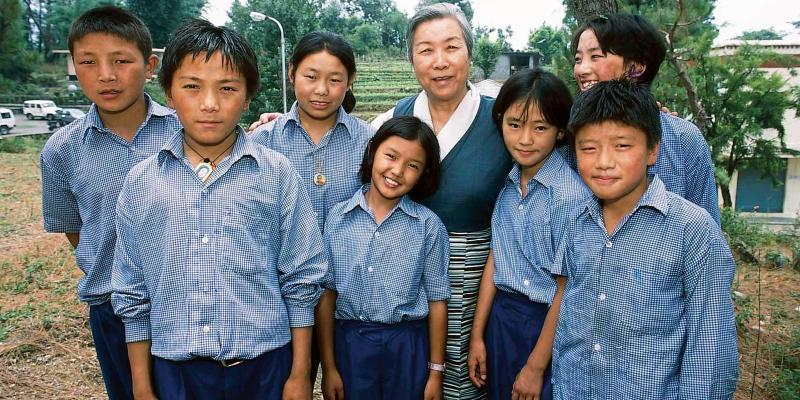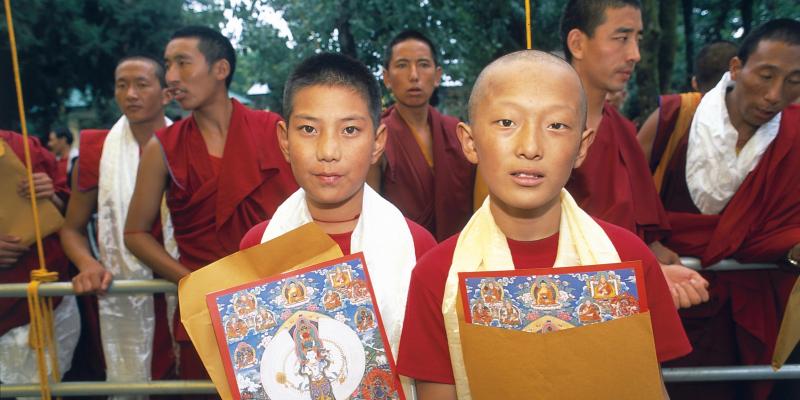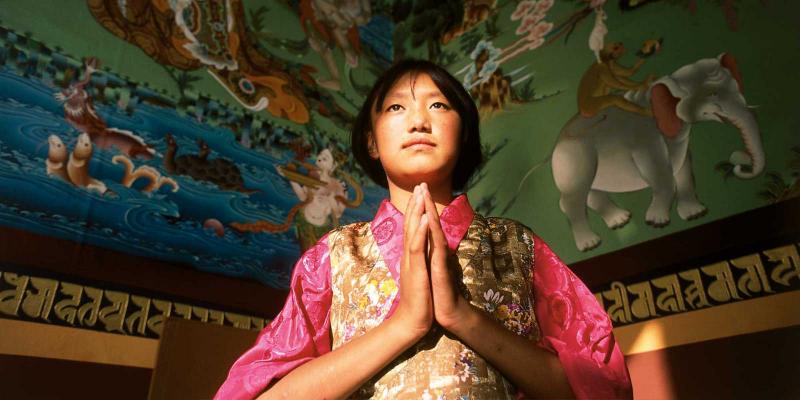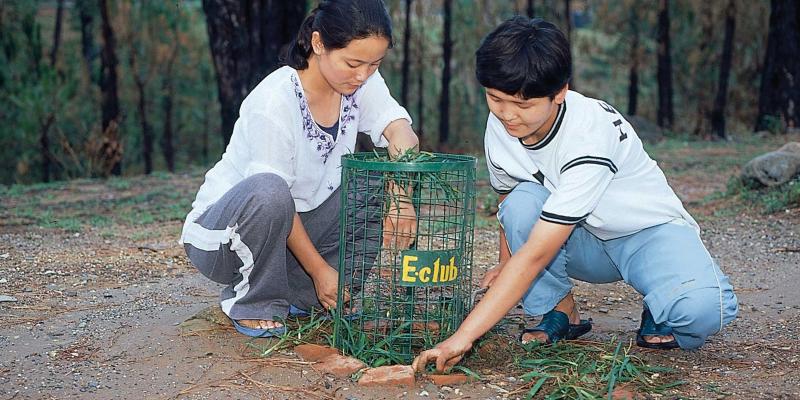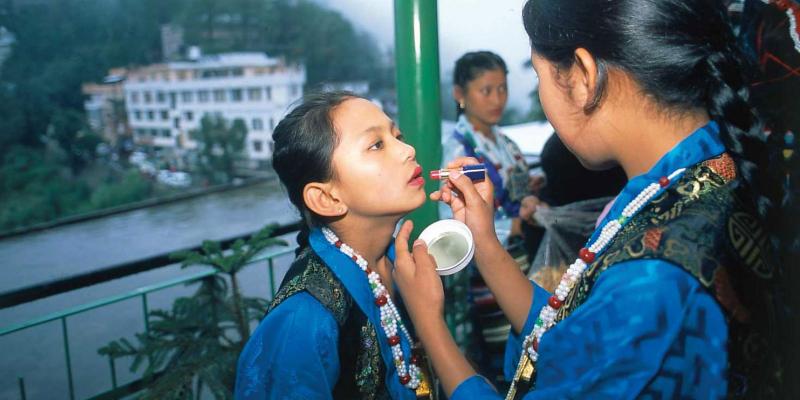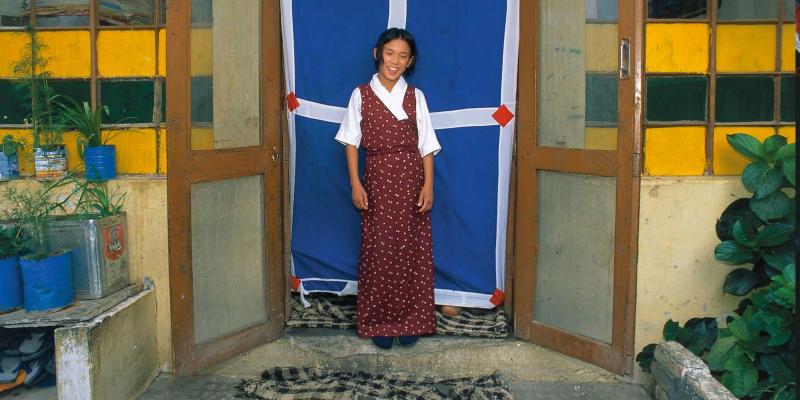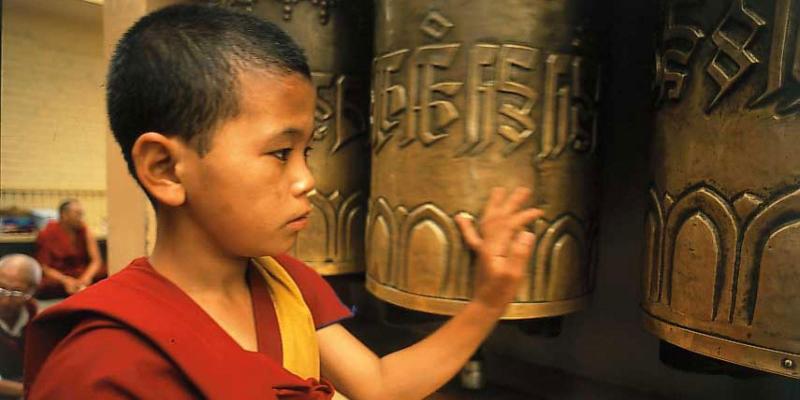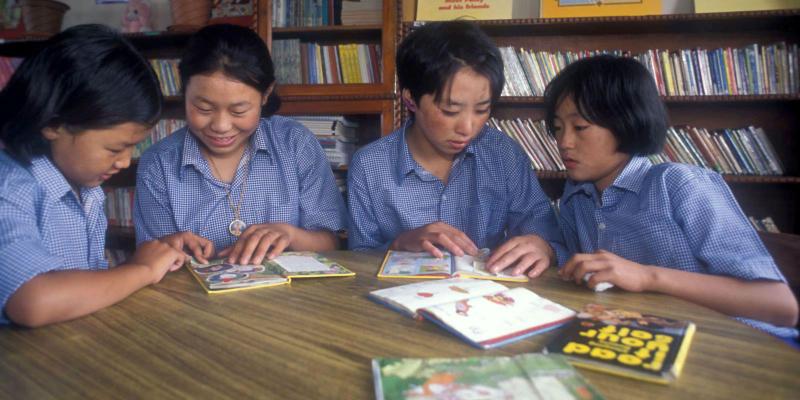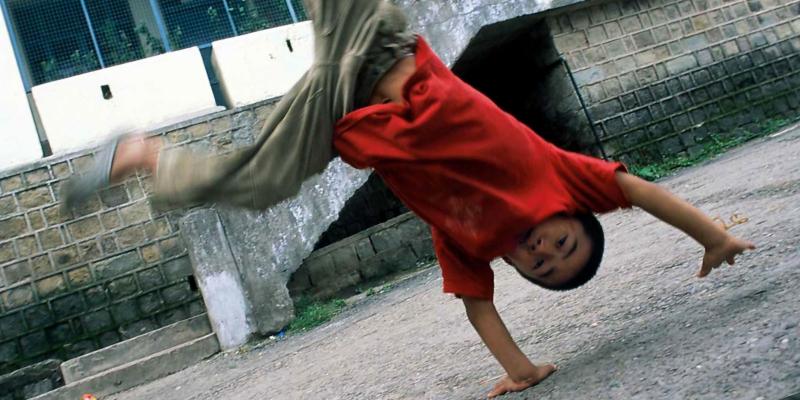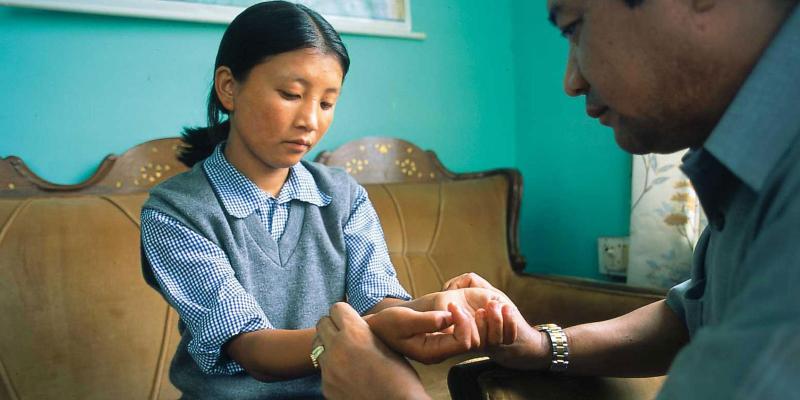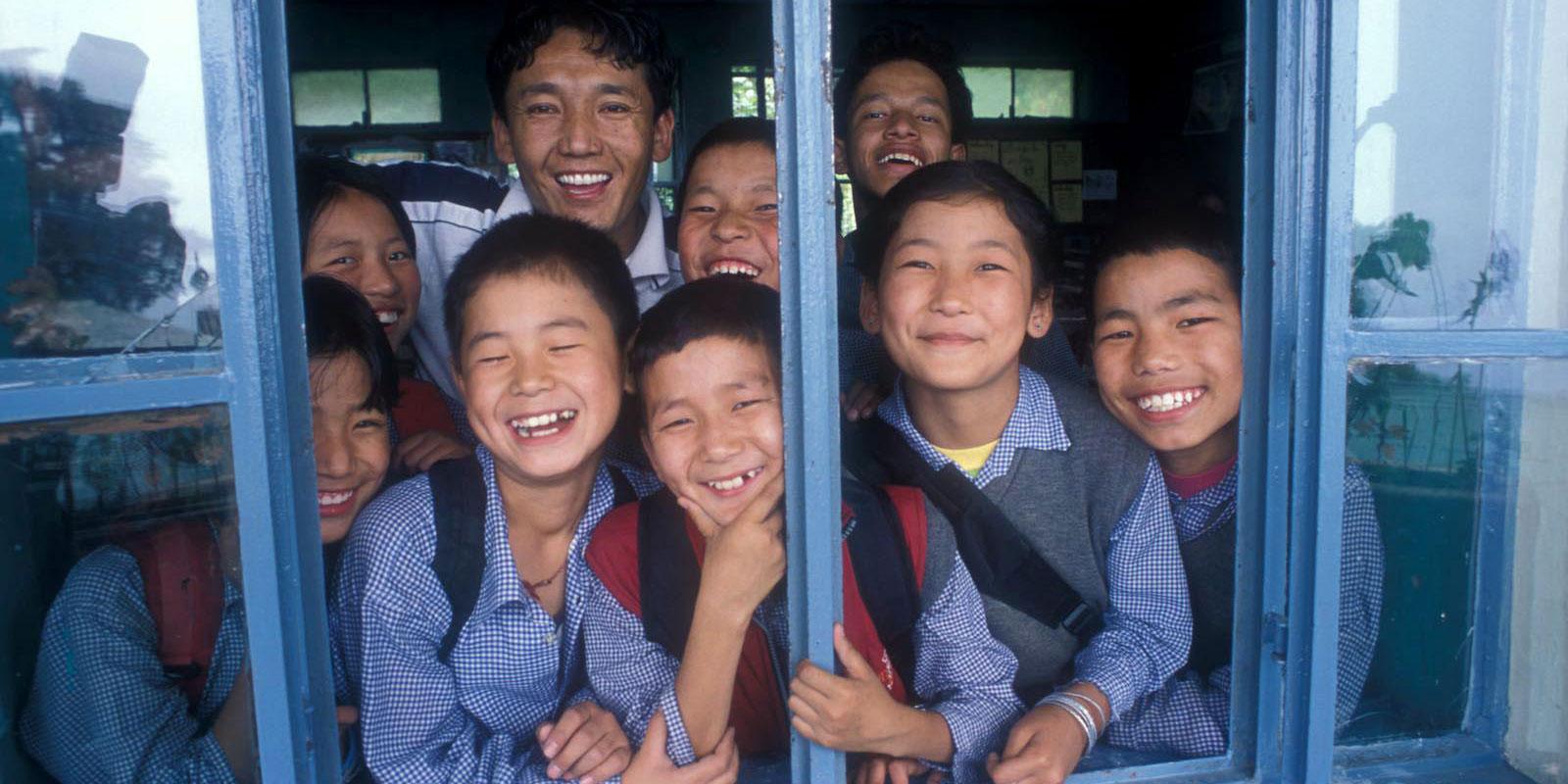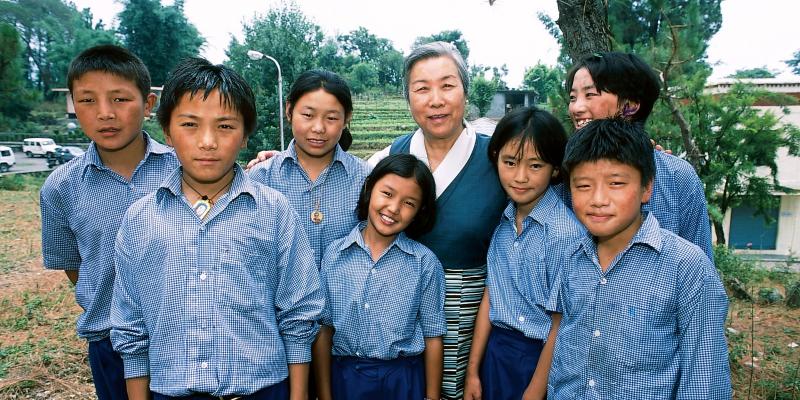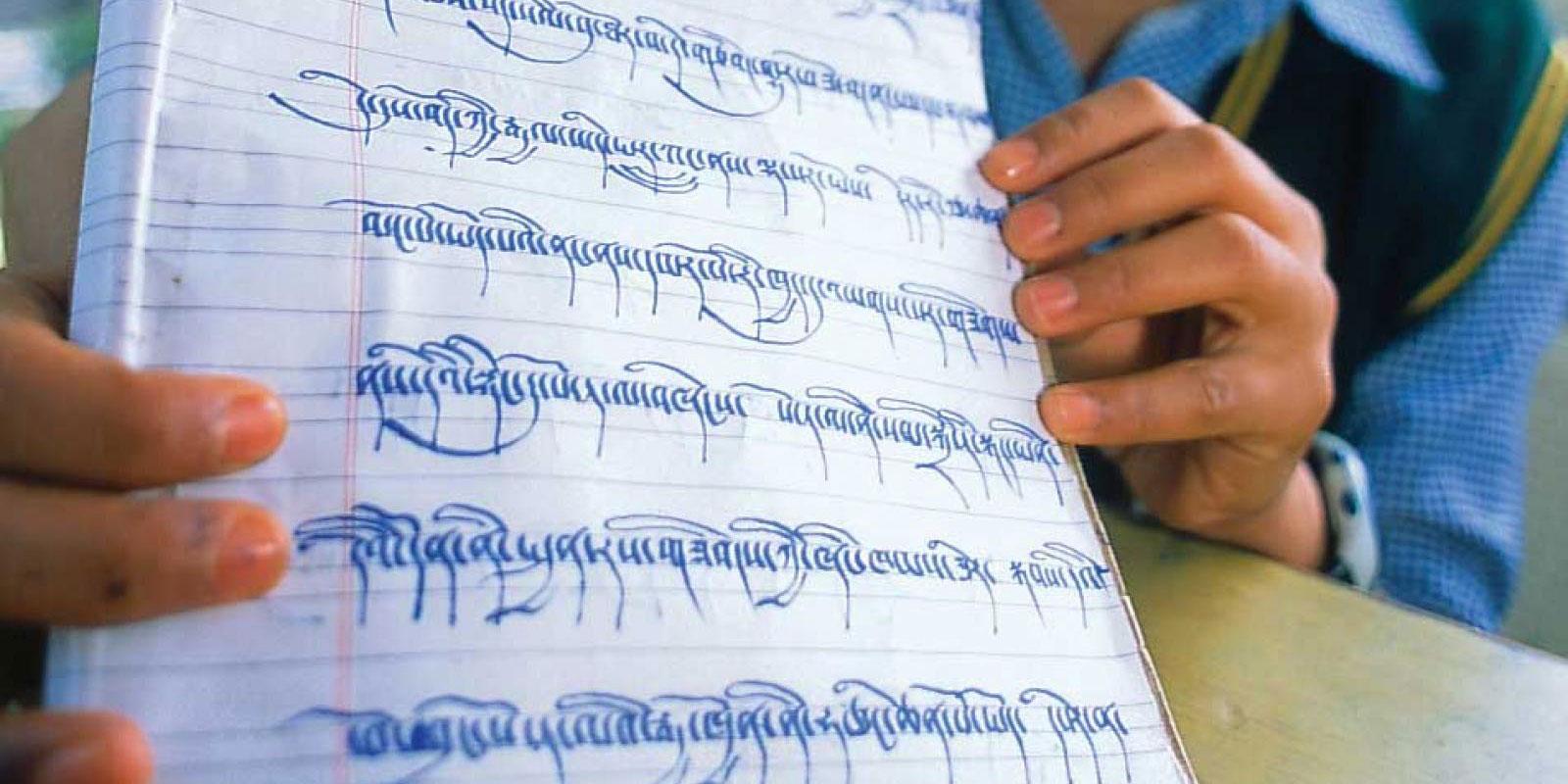
Learn Tibetan!
Tibetan is becoming a neglected language in Tibet. The teachers in the schools are often Chinese who teach in Chinese. Preserving their own language is an important reason why Tibetan parents send their children to schools in children’s villages in India.
Write Tibetan
Tenzin, 12, likes learning the Tibetan alphabet and writing Tibetan letters. The Tibetans have had their own alphabet for over 100 years. It looks similar to the Indian language Sanskrit. Youloe came to the children’s village in Gopalpur five years ago. At home in Tibet she couldn’t go to school. “It was too expensive and the schools that existed were a long way from home,” she says.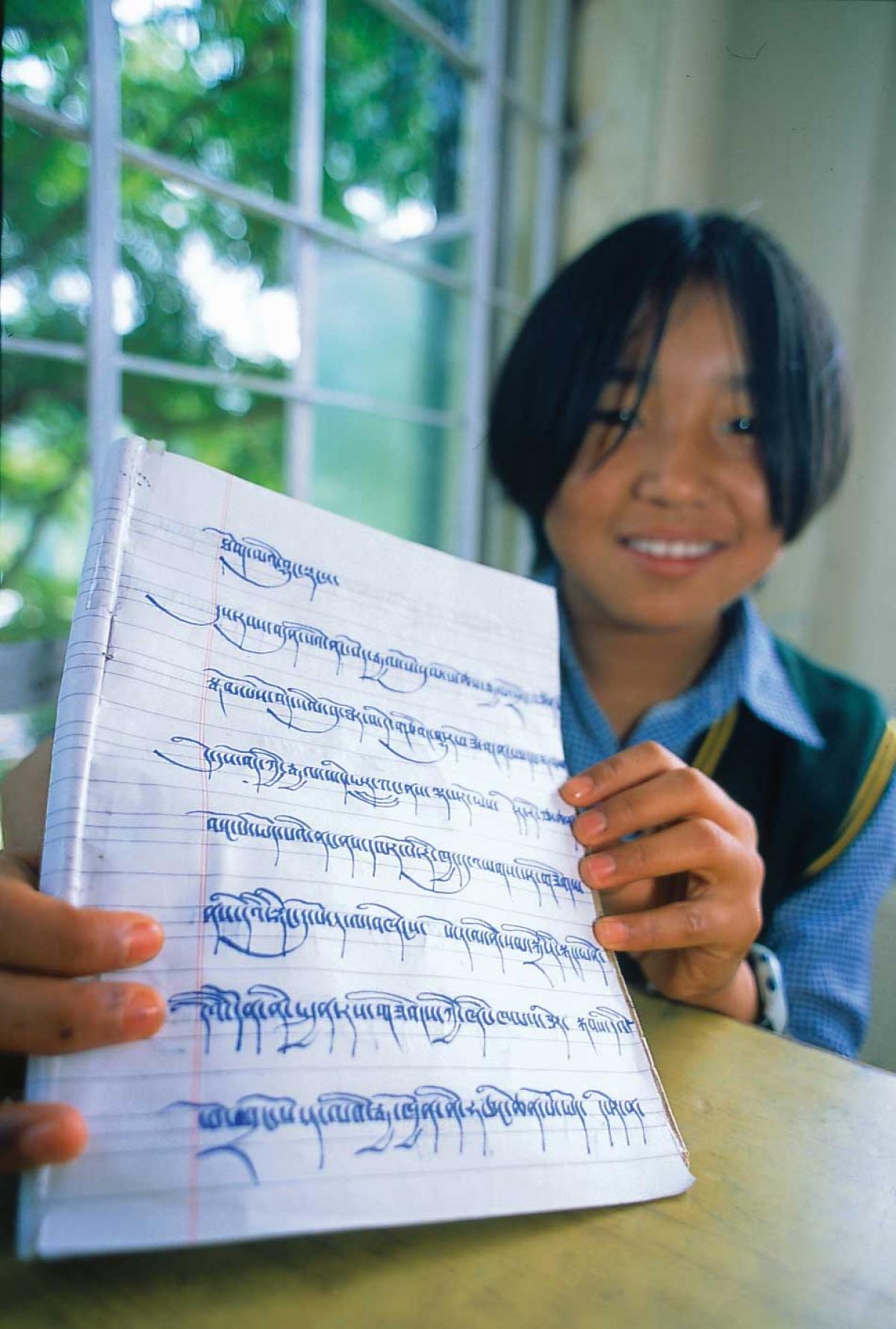
Tenzin shows off her written Tibetan calligraphy! © Kim Naylor/WCPF
Count in Tibetan
1 – chig2 – nyi
3 – sum
4 – shi
5 – nga
6 – druk
7 – dun
8 – gyey
9 – gu
10 – chu
Speak Tibetan
Mother - AmaFather - Pema
Hello - Tashi delek
Goodbye - Kaley shu
Yes - La rey
No - Mindu
Thank you - Tu djey tchey
Excuse me - Gongta
How are you? - Kerang kusu depo pey?
What’s your name? - Kerang ming karey rey?
How old are you? - Kerang lo katsey rey?
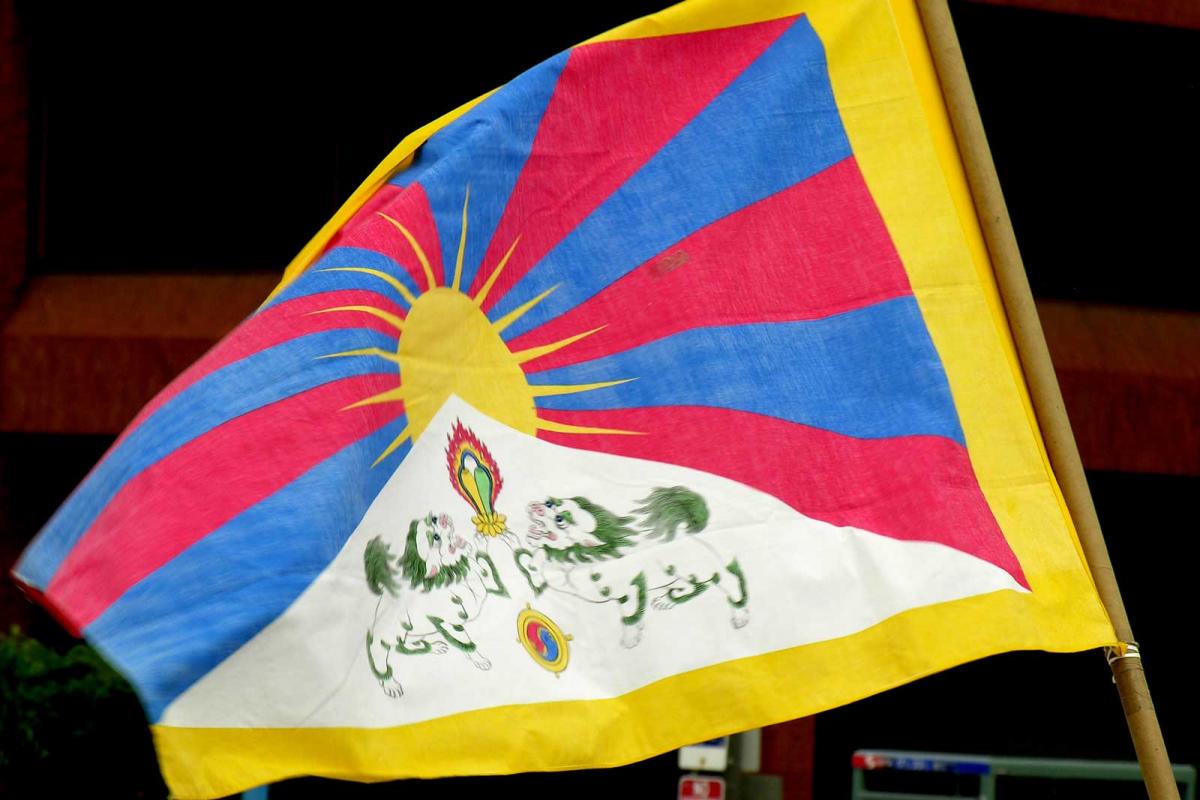
Forbidden flag
Norbu, 13, got a question in a Buddhist chat-room about what Tibet’s flag looks like. It is forbidden in China. In the middle of the flag there is a white, snow-covered mountain. This is the land of Tibet. The six red bands are Tibet’s people and the six blue bands represent Tibet’s dark-blue sky. A yellow sun shines behind the mountain top and represents joy about the light which gives freedom as well as spiritual and material happiness and prosperity. The jewel that the snow lions hold between them symbolises Buddhism. The yellow border symbolises that Buddhism should spread and flourish.Their own teacher training
Jetsun Pema wants refugee children to be taught in their own language in primary school, so they don’t lose contact with their language and culture. That’s why TCV has started its own teacher training; to make sure that there are enough good Tibetan teachers in the future. The majority of teachers who work at TCV today grew up in the children’s villages.Related stories
WORLD'S CHILDRENS PRIZE FOUNDATION
Långgatan 13, 647 30, Mariefred, Sweden
Phone: +46-159-129 00 • info@worldschildrensprize.org
© 2020 World’s Children’s Prize Foundation. All rights reserved. WORLD'S CHILDREN'S PRIZE®, the Foundation's logo, WORLD'S CHILDREN'S PRIZE FOR THE RIGHTS OF THE CHILD®, WORLD'S CHILDREN'S PARLIAMENT®, WORLD'S CHILDREN'S OMBUDSMAN®, WORLD'S CHILDREN'S PRESS CONFERENCE® and YOU ME EQUAL RIGHTS are service marks of the Foundation.
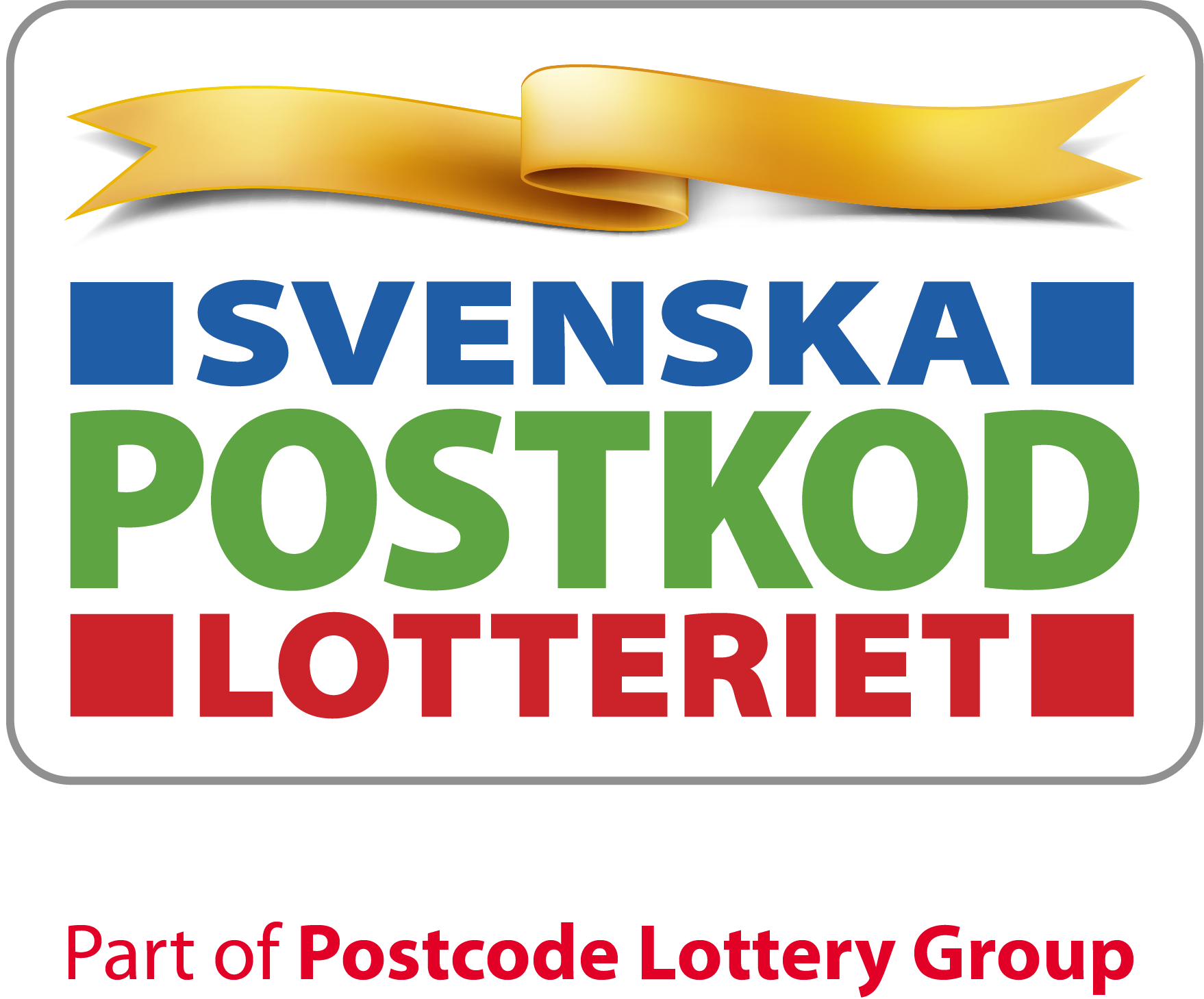
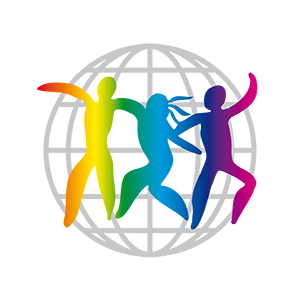
x
x
x

